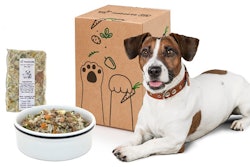
A survey of global consumers shows many believe companies are most responsible for addressing sustainability issues such as increasing the amount of recycled packaging or reducing emissions from air transport—more responsible than are governments or the consumers themselves.
So says the new Mintel Sustainability Barometer, a report of the survey. Besides the 48% of consumers worldwide who say companies are most responsible for sustainability (compared to 25% for consumers or 20% for governments), 44% say they believe the country where they live is suffering from climate change, but only 33%, on average, believe their country is a contributor.
“There seems to be a sustainability gap—a striking difference between consumers’ experience with the causes of climate change and the reality of where the responsibilities lie,” says Richard Cope, senior trends consultant for Mintel. “One of the major challenges for companies and brands is how to effectively close this understanding gap to better position their products and services as part of the sustainability solution. This will require more education around uncomfortable realities if more consumers are to engage with issues and environmentally beneficial products.”
The survey did reveal some ways for companies and brands to best connect with consumers on sustainability. In terms of what encourages them to buy products or services claiming to benefit or protect the environment, respondents said they most want information on how their purchase would have a direct impact (for example, one tree planted per purchase), followed by labeling to show the product’s environmental impact, such as its CO2 emissions, amount of water used or distance traveled to reach the consumer.
Environmental footprint labels on pet food
These survey findings may offer insights for pet food companies and brands, though one challenge (not unique to pet food) is the lack of standardization in measuring carbon footprints. Even when a robust methodology exists, such as lifecycle analysis (LCA), there is to date no standardization in our industry as how to conduct one. (For more insights on LCAs in pet food, check out this webinar, “How sustainability is impacting pet food ingredients, packaging,” in which Heather Acuff, product development manager for Nulo Pet Food, provides an overview of the LCA framework.)
Reaching the point of being able to provide sustainability related information on labels could be key with consumers increasingly focused on that, as pet food’s environmental footprint has come under some fire from mainstream media, environmental organizations and others. The main culprit, according to most of these critiques, is protein sources from animals, specifically livestock. (Purveyors of pet food using other sources of protein also often take this tack in their marketing strategies and materials.)
The “proof” they frequently cite is a study published by Gregory S. Okin of the University of California Los Angeles in 2017 purportedly showing that “dog and cat animal product consumption is responsible for release of up to 64 ± 16 million tons CO2-equivalent methane and nitrous oxide, two powerful greenhouse gasses.”
While several conclusions of Okin’s research, particularly some of the assumptions about pet food he made in conducting it, have been debunked by pet food experts and related organizations, those documents do not tend to be found or reported in most articles citing the Okin study. (Or perhaps they are discounted as industry bias.)
Do traditional pet food proteins deserve a high carbon footprint?
Recently, an expert who has also studied the sustainability of proteins in pet food, Kelly S. Swanson, Ph.D., a professor researching comparative nutrition and nutrigenomics at the University of Illinois Urbana-Champaign, addressed other assumptions made about these protein sources and how they are used in pet food. During an Ask the Pet Food Pro chat about novel proteins, he said that in many cases, an LCA to calculate the carbon footprint of a product is based on human food.
“Unfortunately, I think the key limiter on the pet side is some people will give the same values,” he explained. For example: “If you have meat and bone meal versus a sirloin steak, clearly we know those are different products. They’re coming from different cuts, and you have the bone there, but some people give them the same carbon footprint, because it comes from a cow. I guess I don’t agree with that philosophy, if especially on the pet side, with livestock or aquaculture, we’re using secondary products, that’s really giving a credit, if you will, to the human food industry.”
In other words, if half the carcass of an animal is not going into human food production but is being used in pet food or another feed product, that’s a sustainable use of the entire animal. “I think that doesn’t deserve to have the same footprint,” Swanson said.
In his paper, Okin called out this concept that pet food contributes to sustainability by using byproducts (or, as Swanson calls them, secondary products) from human food livestock production. “The argument that dogs’ and cats’ environmental and energetic impacts are obviated by the fact that they eat byproducts from the human food system, and that otherwise the material would go to waste, relies on the assumption that these same byproducts could not be made to be suitable for human consumption after suitable processing,” Okin wrote.
Of course, the fact is they are not made suitable, because most of us humans in the Western world reject eating them! (Okin didn’t mention that in his paper.)
However, there is agreement with Okin when it comes to human-grade proteins in pet food; Swanson pointed out their lack of sustainability in his earlier research. I believe Swanson and others would also agree with Okin’s conclusion that overnutrition—the rising incidence of pet obesity—increases pet food’s carbon footprint.
The power of upcycling in pet food
Finding common ground on sustainability, for pet food or in general, is difficult in part because of that lack of standardization in measurements and methodologies. Since Okin’s study, some progress has been made with pet food: For example, in 2018, FEDIAF (the European Pet Food Industry Federation) released rules and guidelines for the environmental footprints of various products (cited by Acuff in her webinar presentation). And more recently, the Pet Sustainability Coalition (PSC) has been conducting research on the carbon footprint of pet food protein sources with Iowa State University.
Much research is still needed, and let’s hope that work will soon be available and as widely referenced as the Okin study. Meanwhile, pet food has a strong sustainability to tell—first with those protein ingredients that are byproducts of livestock production for humans. Unfortunately, they have received a negative and misleading reputation in the past on pet food rating sites (sometimes inspired by marketing messages of pet food companies themselves) for not being nutritious or good quality, when in fact they are highly digestible, palatable and nutritious for dogs and cats.
Perhaps the bad reputation can be overcome by calling such ingredients secondary products instead, as Swanson does, or by referring to their use with a popular new term: upcycling. Yes, it’s a buzzword now, but it may have lasting power thanks to the growing number of sustainability minded consumers.
Swanson made that link during the Ask the Pet Food Pro chat. “The pet food industry, since its foundation, has been kind of upcycling and using things that other people viewed as not human food. And again, in the U.S., we don’t eat certain things that are consumed in other parts of the world. So we have to think about it that way.”
Note: Caitlyn Dudas, executive director and co-founder of PSC, will present information from their pet food protein study at Petfood Forum 2021, while Aurelie de Ratuld, Ph.D., CSR director for Diana Pet Food, will speak about LCAs and Swanson will lead a panel discussion on fresh and human grade pet food.
















